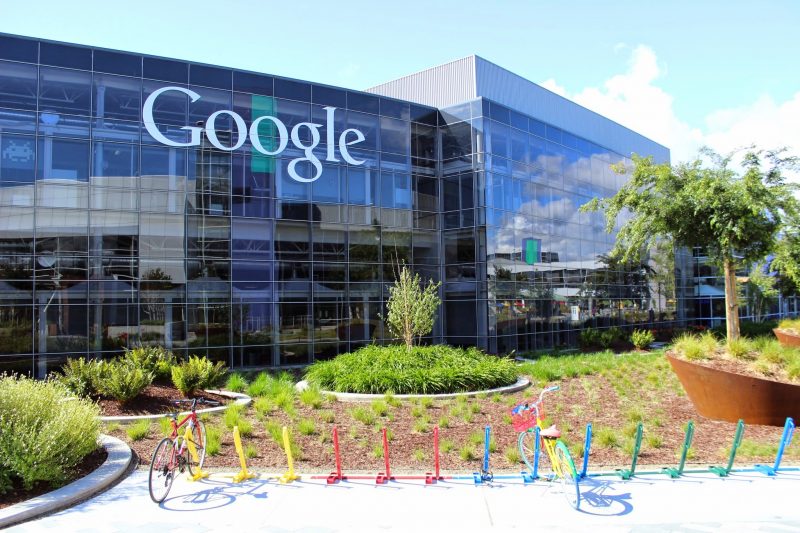Table of Links
Abstract and 1. Introduction
- Background
- Related Work
- MEV Discovery
- MEV Extraction
- Conclusion and References
In the MEV discovery stage (see Section 4), we have shown that although the pools we track get updated on median every six blocks, our algorithm fails to find many profitable opportunities as extracted value shows the efficiency of MEV searchers on Algorand in exploiting arbitrages as soon as they appear in a block. To be competitive in network-level MEV searching, we need to frontrun other searchers in execution. Since FCFS MEV extraction depends on latency optimization, in this section, we demonstrate how transactions can be prioritized by running experiments on a privately deployed Algorand network.
5.1 Network Experiments and Analysis
This section introduces the conducted network experiments, primarily focusing on the Algorand transaction ordering mechanism under simultaneous transaction attempts by competing entities. The central hypothesis driving these experiments examines the potential for a competitor to secure a transaction position in a block, thereby extracting arbitrage opportunities before others. The arbitrage trader must place their transaction ahead of the competition in a block, as subsequent transactions that compete for the same opportunity are likely to fail once the opportunity has been extracted. To understand the behavior of the network in practice, we run a sequence of experiments in a private network that helps us verify the behavior on Algorand’s mainnet. The objectives of these network experiments are threefold:
Q1 How do the latency and transaction fees affect the transaction ordering when two different entities compete for prior transaction execution?
Q2 How does the connectivity between relay and participation nodes with differently distributed stakes affect the transaction ordering?
Q3 Is it possible to prioritize a transaction if we have visibility over the network topology and if so, how can we achieve this?
We set up a private network similar to Algorand mainnet to answer these questions instead of utilizing Algorand’s testnet. Even though running experiments on the testnet would also have been costless, we require more visibility and control over the distribution of participation nodes and their stake than in the testnet.
A private network provides granular control over the topology, in which we can introduce various latencies, distribute stakes among the participation nodes the way we want, and scale transaction issuance to emulate various network conditions. We use the METHODA framework [15] that extends the EnGINE toolchain [14]. METHODA also implements the Algorand blockchain, making it easier to automate the Algorand network deployment process in a distributed environment relevant to our scenarios. In addition, it supports scalable experiments with a number of nodes and can emulate delays using Network Emulator (netem)[16].
5.1.1 Experiment Design
To collect insights and answer the defined questions, we devise three scenarios. These scenarios are realized using three distinct network topologies, each denoted using specific notations. These notations are defined as follows:
5.1.2 Experiment Setup
Each Algorand node – participant, non-participant, and relay node is deployed using a combination of multiple physical machines and Linux containers (LXCs) interacting with each other. Each peer node runs in its own LXC container allocated the recommended HW specs – 16 vCPUs for a relay and 8 vCPUs for participation nodes. The LXC containers run on a node with 32cores/64threads AMD EPYC 7543 with 512 GB DDR 5 RAM. Depending on the scenario, we scale to additional physical nodes once we reach the available resources. The nodes are interconnected via a 10 GbE switch. Therefore, even if the delay between the container and physical machine differs, it is negligible compared to introducing delay by netem. We conducted our experiments using the Algorand protocol version abd3d4823c6f77349fc04c3af7b1e99fe4df699f and go-algorand in 3.18.1 release. During each experiment, we create 500 blocks corresponding to roughly 27.5 min of runtime and simultaneously issue transactions from S1 and S2 at every block.
5.1.3 Experiment Analysis
To highlight the findings from the three scenarios, we monitor how often the decrement method is invoked on node np1 by S1, while the increment method is simultaneously invoked on node np2 by S2. A detailed analysis of these results is provided below, with all results summarized in Table 1 highlighting the proposer node, block count, the method, and frequency for the corresponding method execution.
Scenario 1 In Scenario I, we observe a consistent prioritization pattern throughout all 500 iterations. The decrement function call directed to node np1 by S1 always reaches p1 first over the increment call sent to node np2 by S2. Notably, this occurs despite the transaction to np2 being attached with a fee tenfold that of the transaction to np1. This outcome distinctly indicates that higher transaction fees are ineffective within Algorand’s FCFS network to secure prioritization (unless a network congestion strategy is adopted as described in [20]). Furthermore, the absence of additional latency between np1 and relay r1 results in the transactions of S1 being consistently favored.
Scenario 2 Continuing with the observations in Scenario II, we see that node p1 is chosen as the proposer in 377 out of 500 (∼ 75 %) iterations. Hence, we confirm that proposer selection frequency is positively correlated to the stake in the network (p1 : 72 %). Additionally, it is noted that when p1 served as the proposer, the decrement function call is consistently prioritized. On the other hand, when p2 is the proposer, the increment call received prioritization, although not every time. Despite node np1 having advantageous network positioning due to its connections with all relays, the selection of p2 as the proposer enables searcher S2, using node np2, to propagate their transactions ahead of S1. This advantage for S2 can be attributed to the latency existing between np1 and relay r3. Nonetheless, as S1 prevails in most cases, the findings signify the importance of a node’s connectivity to a relay with higher-staked participants to achieve a prior position in the block.
Scenario 3 Lastly, Scenario III confirms that the proposers’ observed selection frequency matches the theoretical selection frequency and its stake within the network. Additionally, two critical observations emerge from this scenario. First, in instances where p1 and p2 are selected as proposers, there is a heavy bias towards prioritizing the decrement call by S1. This observation validates our earlier conclusions, underscoring latency as a pivotal factor influencing transaction order. The latency between np2 and relay r2 contributes to the delayed processing of the increment function call sent to np2 from S2. Second, when p3 and p4 are selected as proposers, the data indicate an almost equal likelihood of giving preference to either searcher’s call. Hence, this scenario suggests that when searchers’ utilized nodes’ latency to relays and the respective participation nodes with equivalent stakes are similar, they have an equal chance of executing their competing transaction first.
5.2 Network Analysis Findings
The scenarios, emulating critical dynamics on the blockchain network, contribute to verifying Algorand’s behavior under various conditions and answer the outlined questions Q1-Q3. The summary of the key findings is as follows:
• Transaction fee does not play a role in prioritizing a transaction in the Algorand blockchain since the proposers have no incentive to reorder transactions based on fees attached as they do not get to keep them.
• Network latency is critical in ordering transactions in FCFS blockchains. For arbitrage traders in Algorand, this underscores the importance of minimizing the latency between their transaction nodes and the corresponding relay nodes. Strategic positioning is crucial for enhancing the likelihood of transaction precedence to competitors.
• The proximity of a node to a high-staked proposer is significantly influential in transaction sequencing. Arbitrage traders aiming to exploit market opportunities should prioritize transmitting their transactions to well-connected relays with multiple high-staked nodes. Such an approach increases the probability of their transactions being processed earlier, thereby gaining a competitive edge in transaction execution.
6 Conclusion
This paper provides a two-staged approach for MEV searching on Algorand, an FCFS blockchain. Initially, we propose an algorithm for arbitrage detection and evaluate its performance using historical block state data, taking into account the time constraints of Algorand. Our findings indicate that although significant state updates between blocks are infrequent, MEV searchers on Algorand tend to close arbitrage opportunities within the same block they arise. Therefore, to be competitive, MEV opportunity detection should occur at the transaction level in the mempool rather than at the block state level as initially attempted. We also show the impact of available algorithm runtime and arbitrage selection strategy on the discovered revenue.
Subsequently, we perform experiments on a private Algorand network to identify key factors in transaction prioritization within an FCFS framework. Our results highlight the importance of minimizing latency, particularly in connections to relays with well-connected links to multiple highstaked nodes.
Looking ahead, we plan to refine our arbitrage detection algorithm by considering a broader set of pools and applying it directly at the network level. Additionally, we aim to extend our network experiments to the Algorand mainnet to explore potential latency correlations between high-staked block proposers and successful MEV searchers. This future research will enhance our understanding of MEV dynamics in FCFS blockchains like Algorand.
References
[1] DefiLlama, . URL https://defillama.com/chain/Algorand.
[2] libMEV, . URL https://libmev.com.
[3] Top Decentralized Exchanges Ranked by Volume. URL https://www.coingecko.com/en/ exchanges/decentralized.
[4] Crypto API Documentation, 2023. URL https://www.coingecko.com/en/api/ documentation.
[5] Hayden Adams. Uniswap: A protocol for automated token exchange on ethereum, 2018. URL https://uniswap.org/whitepaper.pdf. Accessed: [Your Access Date Here].
[6] Guillermo Angeris, Alex Evans, Tarun Chitra, and Stephen Boyd. Optimal Routing for Constant Function Market Makers. In Proceedings of the 23rd ACM Conference on Economics and Computation, EC ’22, pages 115–128, New York, NY, USA, July 2022. Association for Computing Machinery. ISBN 978-1-4503-9150-4. doi: 10.1145/3490486.3538336. URL https://dl.acm.org/doi/10.1145/3490486.3538336.
[7] Facundo Carrillo and Elaine Hu. MEV in fixed gas price blockchains: Terra Classic as a case of study, March 2023. URL http://arxiv.org/abs/2303.04242. arXiv:2303.04242 [cs].
[8] Jing Chen and Silvio Micali. Algorand, 2017.
[9] Philip Daian, Steven Goldfeder, Tyler Kell, Yunqi Li, Xueyuan Zhao, Iddo Bentov, Lorenz Breidenbach, and Ari Juels. Flash boys 2.0: Frontrunning in decentralized exchanges, miner extractable value, and consensus instability. In 2020 IEEE Symposium on Security and Privacy (SP), pages 910–927, 2020. doi: 10.1109/SP40000.2020.00040.
[10] Yossi Gilad, Rotem Hemo, Silvio Micali, Georgios Vlachos, and Nickolai Zeldovich. Algorand: Scaling byzantine agreements for cryptocurrencies. In Proceedings of the 26th Symposium on Operating Systems Principles, SOSP ’17, page 51–68, New York, NY, USA, 2017. Association for Computing Machinery. ISBN 9781450350853. doi: 10.1145/3132747.3132757. URL https: //doi.org/10.1145/3132747.3132757.
[11] Yossi Gilad, Rotem Hemo, Silvio Micali, Georgios Vlachos, and Nickolai Zeldovich. Algorand: Scaling byzantine agreements for cryptocurrencies. Cryptology ePrint Archive, Paper 2017/454, 2017. URL https://eprint.iacr.org/2017/454. https://eprint.iacr.org/2017/454.
[12] Robert McLaughlin, Christopher Kruegel, and Giovanni Vigna. A large scale study of the ethereum arbitrage ecosystem. In 32nd USENIX Security Symposium (USENIX Security 23), pages 3295–3312, Anaheim, CA, August 2023. USENIX Association. ISBN 978-1-939133-37-3. URL https://www.usenix.org/conference/usenixsecurity23/ presentation/mclaughlin.
[13] Kaihua Qin, Stefanos Chaliasos, Liyi Zhou, Benjamin Livshits, Dawn Song, and Arthur Gervais. The blockchain imitation game. In Proceedings of the 32nd USENIX Conference on Security Symposium, SEC ’23, USA, 2023. USENIX Association. ISBN 978-1-939133-37-3.
[14] Filip Rezabek, Marcin Bosk, Thomas Paul, Kilian Holzinger, Sebastian Gallenm¨uller, Angela Gonzalez, Abdoul Kane, Francesc Fons, Zhang Haigang, Georg Carle, et al. Engine: Flexible research infrastructure for reliable and scalable time sensitive networks. Journal of Network and Systems Management, 30(4):74, 2022.
[15] Filip Rezabek, Kilian Glas, Richard von Seck, Achraf Aroua, Tizian Leonhardt, and Georg Carle. Multilayer environment and toolchain for holistic network design and analysis, 2023.
[16] Uniswap. Uniswap v3 core, 2021. URL https://uniswap.org/whitepaper-v3.pdf. Accessed: [Your Access Date Here].
[17] Ye Wang, Yan Chen, Haotian Wu, Liyi Zhou, Shuiguang Deng, and Roger Wattenhofer. Cyclic Arbitrage in Decentralized Exchanges. In Companion Proceedings of the Web Conference 2022, WWW ’22, pages 12–19, New York, NY, USA, August 2022. Association for Computing Machinery. ISBN 978-1-4503-9130-6. doi: 10.1145/3487553.3524201. URL https://doi.org/10.1145/3487553.3524201.
[18] Liyi Zhou, Kaihua Qin, Antoine Cully, Benjamin Livshits, and Arthur Gervais. On the Just-InTime Discovery of Profit-Generating Transactions in DeFi Protocols. In 2021 IEEE Symposium on Security and Privacy (SP), pages 919–936, May 2021. doi: 10.1109/SP40001.2021.00113. ISSN: 2375-1207.
[19] Liyi Zhou, Kaihua Qin, Christof Ferreira Torres, Duc V Le, and Arthur Gervais. High-frequency trading on decentralized on-chain exchanges. In 2021 IEEE Symposium on Security and Privacy (SP), pages 428–445, 2021. doi: 10.1109/SP40001.2021.00027.
[20] Burak Oz, Filip Rezabek, Jonas Gebele, Felix Hoops, and Florian Matthes. A Study of MEV ¨ Extraction Techniques on a First-Come-First-Served Blockchain, November 2023. URL http: //arxiv.org/abs/2308.06513. arXiv:2308.06513 [cs] version: 2.
Authors:
(1) Burak Oz, Technical University of Munich;
(2) Jonas Gebele, Technical University of Munich;
(3) Parshant Singh, Technical University of Munich;
(4) Filip Rezabek, Technical University of Munich;
(5) Florian Matthes, Technical University of Munich.
[16] https://man7.org/linux/man-pages/man8/tc-netem.8.html
















